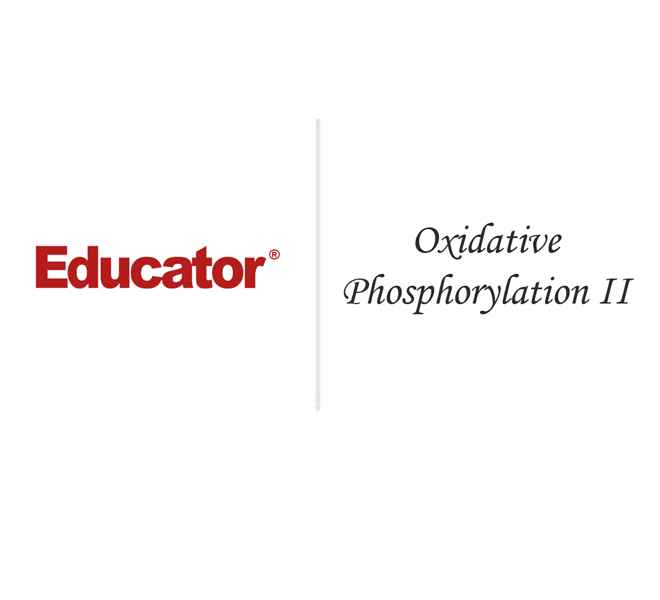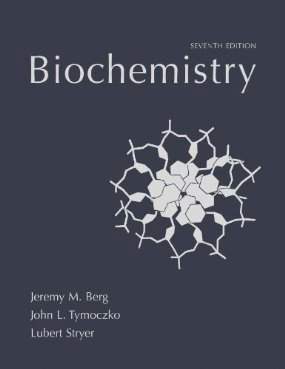Connecting...

For more information, please see full course syllabus of Biochemistry
Biochemistry Oxidative Phosphorylation II
This lecture focuses on the mechanisms and structures of complexes 3 and 4 (cytochrome oxidase) in the oxidative phosphorylation process as well as the overall energetics of the reaction. Once ubiquinone has collected all of the electrons, it passes the electrons to cytochrome C which becomes the cytochrome bc1 complex (Q:cytochrome c-oxidoreductase). After passing through complex 2 and complex 4, they reduce two atoms of oxygen to water. Complex 4 and sends two H⁺ ions into the intermembrane space. The electrical and concentration gradients create a significant amount of potential energy, equaling a ΔG of about 400kJ for four electrons on one side of the membrane and 20 hydrogens on the other. This drives the production of ATP which is then used as energy currency in many other biological processes.
Share this knowledge with your friends!
Copy & Paste this embed code into your website’s HTML
Please ensure that your website editor is in text mode when you paste the code.(In Wordpress, the mode button is on the top right corner.)
- - Allow users to view the embedded video in full-size.










































 Answer Engine
Answer Engine




3 answers
Wed Jan 17, 2018 3:32 AM
Post by Maryam Fayyazi on January 5, 2018
thanks for incredible lecture. I was wondering if you cover cell Biology as well?
2 answers
Last reply by: Sally Reina
Tue Sep 5, 2017 1:51 AM
Post by Sally Reina on August 29, 2017
Hi Professor Raffi Hovasapian,
For Complex IV, it pumps out 2H+, but I am confused by the figure because it showing 4H+ being pumped into the intermembrane space. Can you explain this please?
Thanks!
Sally
1 answer
Fri Apr 7, 2017 6:52 PM
Post by Nikhat Siddiqi on March 25, 2017
Can you please give me a lecture on "Transport across biomembranes: free energy content of transmembrane concentration gradients for uncharged and charged solutes mathematical relationship"
Thanks
0 answers
Post by Phil Beauchamp on July 11, 2014
What about charge balance? 2 electrons total -2 in charge move from a NADH through the electron transport chain but they are moving +10 to the IM? Also, when the electrons move, they seem to usually move as hydride, moving a proton with them (or picking up one after a single electron transfer) yet the hydrogen seems like it is considered as H+. It is a little confusing.
0 answers
Post by Professor Hovasapian on September 10, 2013
Hi Vinit,
The answer is thermodynamics. The oxidation of 1 mol of NADH to NAD+ has 220 kJoules of Free energy. Some of this energy is lost simply by the inherent inefficiency of the proton pump. However, most of it ( about 200 joules is used to pump out those protons. This 200 kjoules is used to pump 10 moles of protons. So 1 molecule of NADH oxidized allows 10 H+ protons.
So the number 10 just happens to reflect the Total Free Energy available to do work, and the fraction of that which actually does the work of pumping out protons.
Hope that helps.
Raffi
1 answer
Tue Sep 10, 2013 8:18 PM
Post by Vinit Shanbhag on September 9, 2013
Thanks for the answer. Another question I had was, why only 10 electrons are pumped out per NADH molecule, I know that 4 protons make 1ATP by the ATP synthase, so 10 will make 2.5. Thanks.
0 answers
Post by Vinit Shanbhag on September 7, 2013
Hi, forgot to mention that your lectures r really helpful. Thanks a lot.
1 answer
Sun Sep 8, 2013 4:26 AM
Post by Vinit Shanbhag on September 7, 2013
difference between atp synthase and atpase?
does krebs cycle require oxygen? how is it dependent on ETC for its byproducts?
1 answer
Fri Apr 26, 2013 1:44 AM
Post by Kenshin Kenshin on April 25, 2013
Hi, I was wondering in the equilibrium section of the new pchem vids you were going to make are you going to go over the acid/base equilibrium rxn in the more in depth version for pchem compared to gen chem?
5 answers
Sun Apr 21, 2013 10:04 PM
Post by Brian Phung on April 21, 2013
Hi I was wondering if there would be any vid on signaling pathway?